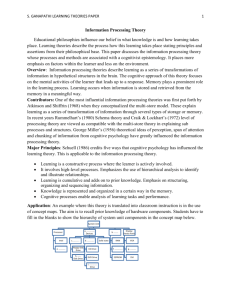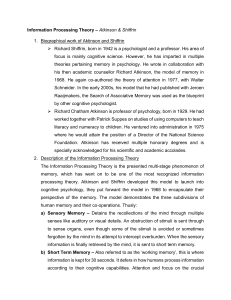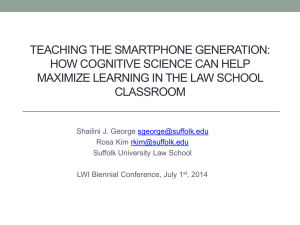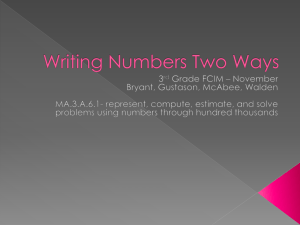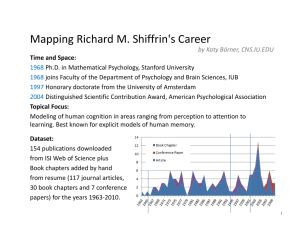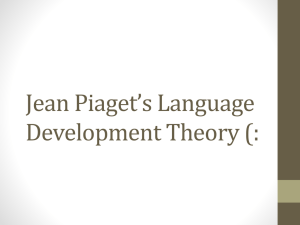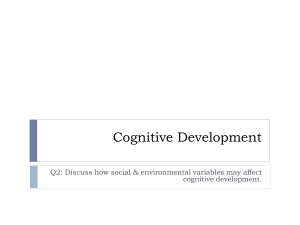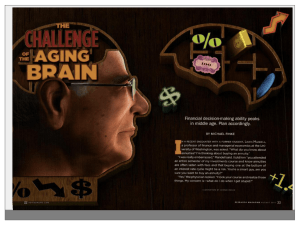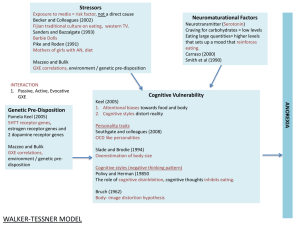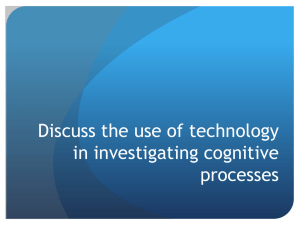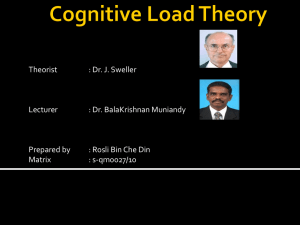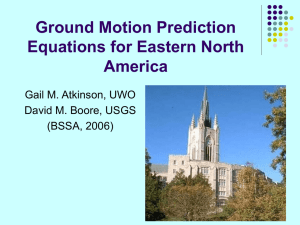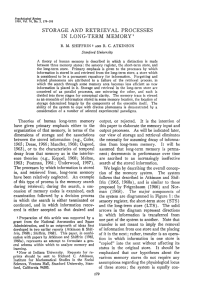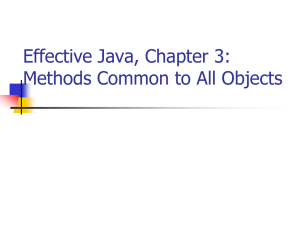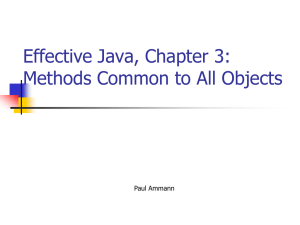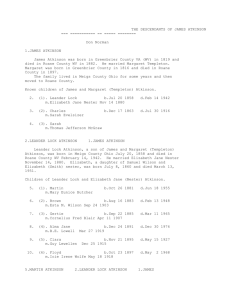Information Processing
advertisement
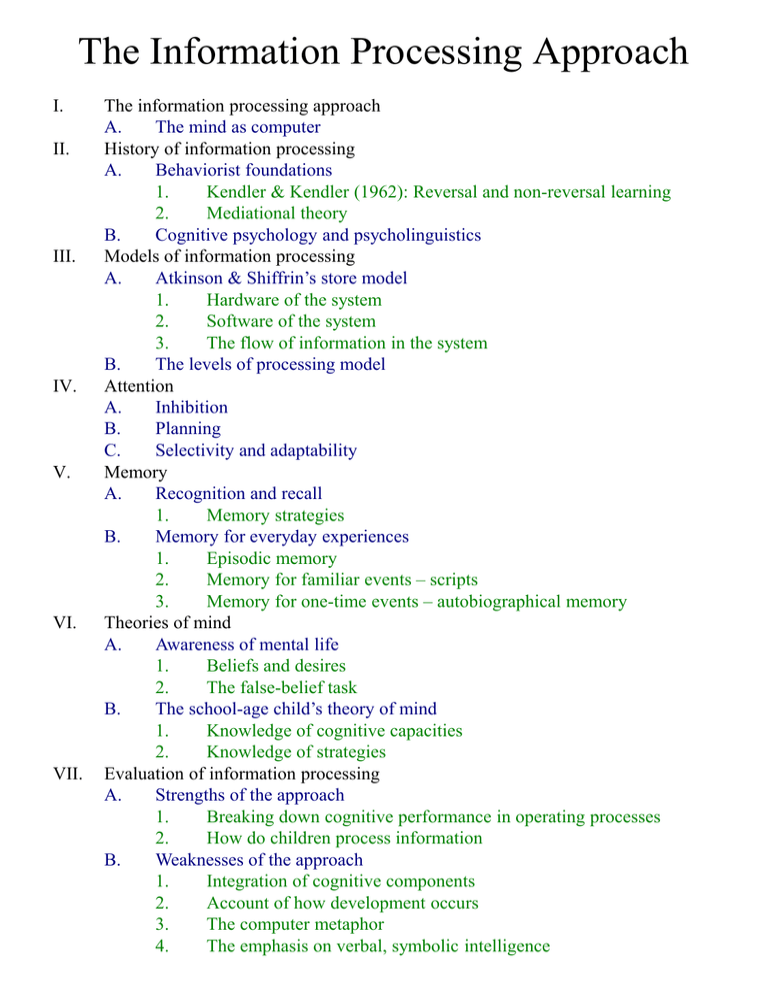
The Information Processing Approach I. II. III. IV. V. VI. VII. The information processing approach A. The mind as computer History of information processing A. Behaviorist foundations 1. Kendler & Kendler (1962): Reversal and non-reversal learning 2. Mediational theory B. Cognitive psychology and psycholinguistics Models of information processing A. Atkinson & Shiffrin’s store model 1. Hardware of the system 2. Software of the system 3. The flow of information in the system B. The levels of processing model Attention A. Inhibition B. Planning C. Selectivity and adaptability Memory A. Recognition and recall 1. Memory strategies B. Memory for everyday experiences 1. Episodic memory 2. Memory for familiar events – scripts 3. Memory for one-time events – autobiographical memory Theories of mind A. Awareness of mental life 1. Beliefs and desires 2. The false-belief task B. The school-age child’s theory of mind 1. Knowledge of cognitive capacities 2. Knowledge of strategies Evaluation of information processing A. Strengths of the approach 1. Breaking down cognitive performance in operating processes 2. How do children process information B. Weaknesses of the approach 1. Integration of cognitive components 2. Account of how development occurs 3. The computer metaphor 4. The emphasis on verbal, symbolic intelligence The Mind As A Computer Step 1: • Encoding • Take in and store information Step 2: • Recoding • Operate on information, revise its symbolic structure Step 3: • Decoding • Decipher meaning, compare new information with previously stored information Step 4: • Output • Produce a response, usually a behavioral performance like solving a task or problem Behaviorist Foundations Kendler & Kendler (1962) Reversal and Non-Reversal Learning First Discrimination + Big equals Yes - Little equals No Second Discrimination + Reversal Little equals Yes - Big equals No + Non-Reversal Red equals Yes Green equals No Atkinson & Shiffrin’s Store Model (Atkinson & Shiffrin, 1968) Richard Atkinson Richard Shiffrin The Levels of Processing Approach (Craik & Lockhart, 1972) Fergus Craik The retention of information is a function of the depth to which the incoming stimuli has been analysed by the system. Example: A written word Levels: Superficial: Perceptual characteristics (e.g., capital vs. small case) Middle: Phonemic characteristics; How does the word sound? Deep: Semantic features or meaning Attention Inhibition • The ability to inhibit impulses and keep goals in mind • Contributions of scaffolding • The Tools of the Mind curriculum Planning • Thinking through sequences of action • Cultural tools that support planning • Planning in older children Selectivity and adaptability • Increases in the ability to selectively attend • The Dimensional Change Card Sort task • How do children acquire better attentional strategies? The Dimensional Change Card Sort Task (Zelazo et al., 1995; Zelazo, 2006) Philip David Zelazo Attention Inhibition • The ability to inhibit impulses and keep goals in mind • Contributions of scaffolding • The Tools of the Mind curriculum Planning • Thinking through sequences of action • Cultural tools that support planning • Planning in older children Selectivity and adaptability • Increases in the ability to selectively attend • The Dimensional Change Card Sort task • How do children acquire better attentional strategies? • Production Deficiency • Control Deficiency • Utilization Deficiency • Effective Strategy Use Memory Recognition and Recall • Recognition • Noticing that a stimulus is the same as one you’ve previously experienced • Recognition memory in infancy • Brown and Campione (1972) • Recall • Cues are provided as to the original stimulus, and you have to reproduce that stimulus • The use of mental strategies • Rehearsal, organization, categorization • DeLoache & Todd (1988) • Changes in mental strategies with age • Use of rehearsal and organization • Use of elaboration Memory for everyday information (episodic memory) • Memory for familiar events – scripts • Memory for one-time events – autobiographical memory Theory of Mind (metacognition) Awareness of mental life • Joint attention • Beliefs and Desires • False-belief task Social referencing Theory of Mind (metacognition) School-age child’s theory of mind • Knowledge of cognitive capacities • Understanding of cognitive processes and their impact on performance • Understanding of sources of knowledge • 2nd order false belief task • DeLoache & Todd (1988) • Changes in mental strategies with age • Use of rehearsal and organization • Use of elaboration • Knowledge of strategies Evaluation of the Information Processing Approach Advantages • Success in providing detailed specification of how younger vs. older children perceive, attend, memorize, and so on • How do children process information in educational important domains Problems • The fragmentation of cognitive processing • Explicit account of developmental change • Limitations of the computer metaphor • The emphasis on verbal, symbolic reasoning
